India’s Kumbh Mela: The Largest Human Gathering on Earth

In 2007, I had the privilege of attending what is believed to have been the largest human gathering ever recorded on earth: India’s Kumbh Mela in Prayagraj. The numbers defy comprehension.
A Phenomenon of Scale and Spirit
The Kumbh Mela defies imagination with its scale. Across its 49-day duration in Prayagraj, the 2007 event drew more than 100 million attendees, including 40 million pilgrims on the most auspicious days. These numbers are more than statistics—they represent the profound spiritual commitment of millions who travel from the farthest corners of India, and beyond, to bathe in the sacred waters of the Ganges, Yamuna, and the mythical Saraswati rivers.
Standing amidst this sea of humanity, one is struck by the deep sense of unity and purpose shared by every individual—whether they’re a devout Sadhu, a family on pilgrimage, or a curious traveler like me. The event celebrates an ancient tradition and showcases India’s unique ability to blend spiritual devotion with logistical complexity.
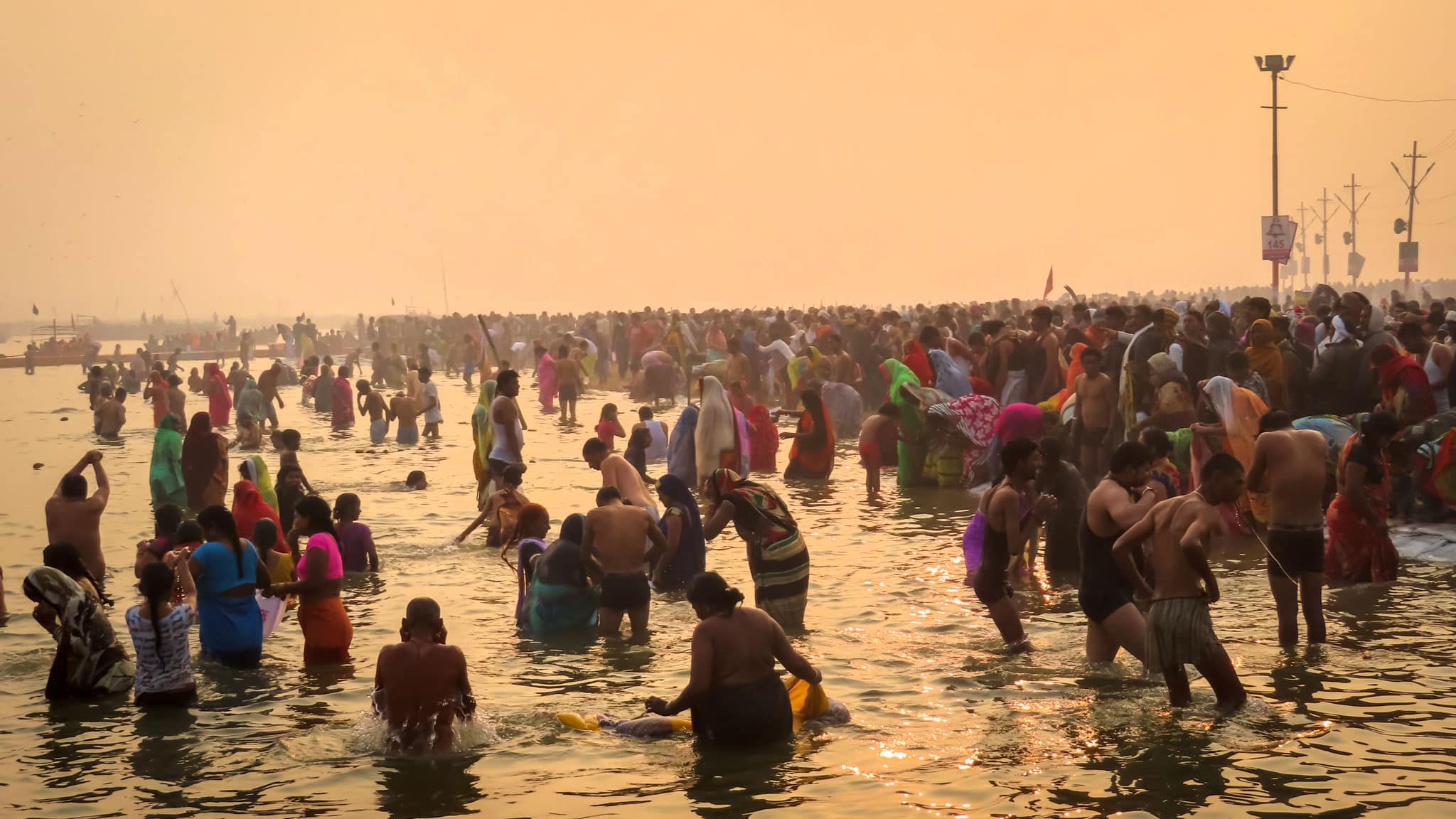
The Cycle of Kumbh Mela
The Kumbh Mela is no ordinary festival; it follows an intricate astronomical cycle. The event occurs every 12 years, rotating among four locations: Prayagraj, Haridwar, Ujjain, and Nashik. Halfway between the 12-year intervals, the Ardh Kumbh (Half Kumbh) takes place. Additionally, a smaller gathering happens every three years, while the Mahakumbh, the largest and rarest iteration, occurs every 144 years.
The timing is determined by the alignment of celestial bodies, ensuring that pilgrims gather at the most auspicious moments. In 2007, I attended an Ardh Kumbh, but even this “half” gathering felt colossal.

Behind the Scenes: Planning and Preparation
The Kumbh Mela is as much a logistical marvel as it is a spiritual one. Hosting tens of millions of attendees requires meticulous planning. The government, alongside religious organizations, begins preparations years in advance. For the 2007 Kumbh, over £300 million was spent to ensure smooth operations, with investments in infrastructure, security, medical facilities, and sanitation.
Temporary cities rise out of nothing. In Prayagraj, a vast stretch of riverbank is transformed into a tent metropolis, complete with streets, bridges, and marketplaces. Yet, navigating this maze can be a challenge. Roads are closed on certain days, and the influx of people means that plans must be precise to ensure you don’t miss key events or processions.
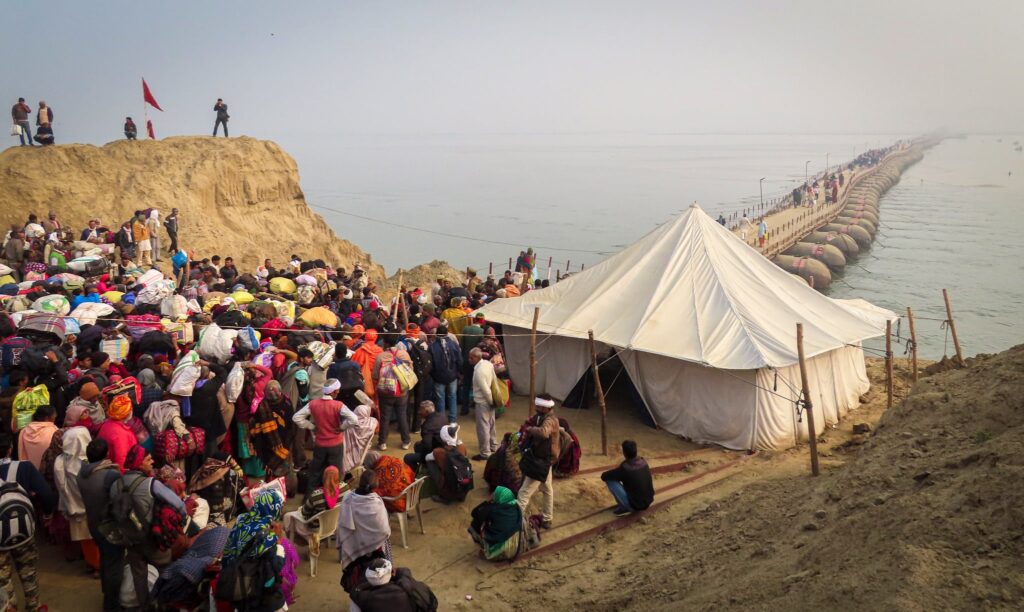
The Rituals: A Journey to Salvation
At the heart of the Kumbh Mela lies the ritual of bathing in the holy waters. It’s believed that immersing oneself in the Ganges cleanses all sins, granting spiritual purification and a path to salvation. Watching countless devotees step into the icy waters, their faces lit with hope and faith, was profoundly moving.
Many pilgrims collect bottles of the sacred water to take home, extending the blessings to their families. Yet, with such vast numbers bathing, the waters can become murky—a paradox of faith and reality. Still, the significance of the act transcends such practicalities for the millions who partake.
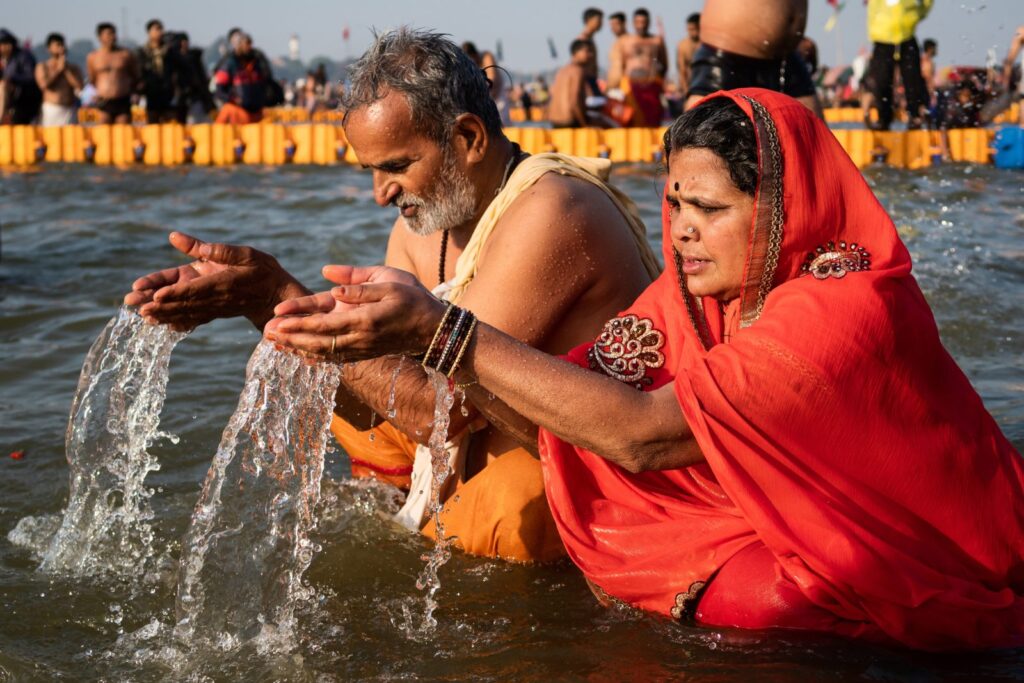
The Cultural Extravaganza
While the Kumbh Mela is primarily a spiritual gathering, it is also a cultural and social phenomenon. The festival features an array of activities and attractions, from yoga programs and book fairs to laser shows and amusement parks.
For me, the most fascinating sights were the processions of the Sadhus, India’s ascetic holy men. With ash-smeared bodies, dreadlocks, and vibrant robes, they are spiritual celebrities of the event. Some perform dramatic rituals or engage in philosophical debates, drawing throngs of onlookers.
UNESCO recognized the Kumbh Mela as an Intangible Cultural Heritage in 2017, cementing its status as a global treasure.
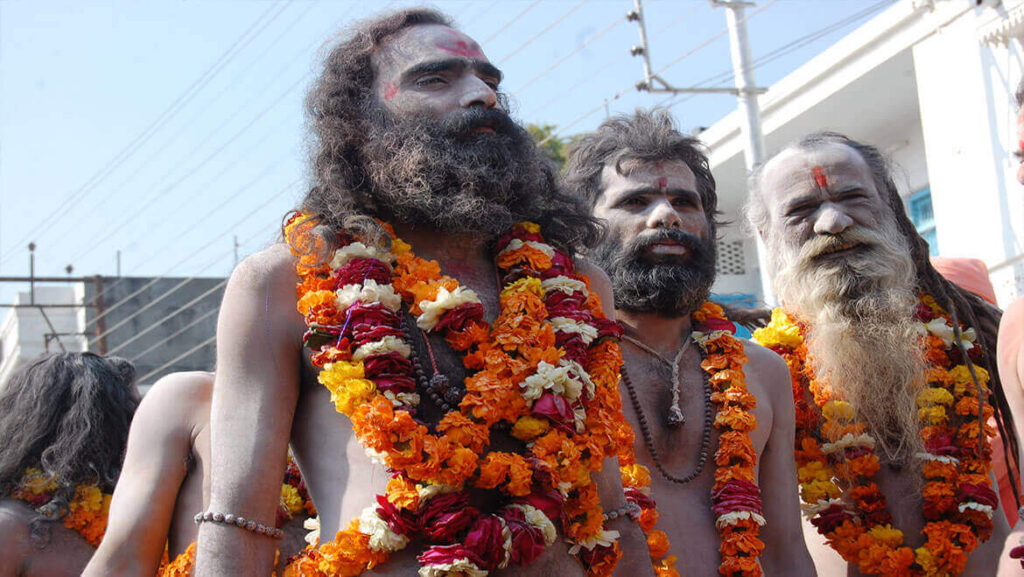
Costs, Community, and Charity
The festival thrives on an incredible sense of community. While wealthier visitors often stay in private tents or nearby accommodations, millions of pilgrims bring their own supplies, setting up makeshift camps. Free or heavily subsidized food is distributed generously, particularly to the Sadhus and less fortunate pilgrims.
This spirit of charity reflects the essence of the Kumbh Mela: it’s not just a personal spiritual journey but a communal celebration of humanity and faith.
A World Within a Festival
Walking through the Kumbh Mela is like stepping into another world. There are moments of serenity—watching the sun rise over the Ganges, with hymns echoing in the background—and moments of chaos, as throngs of people surge toward the ghats for a sacred dip. Yet, every moment is imbued with a profound sense of purpose.
Despite its immense scale, the Kumbh Mela manages to maintain an intimate connection for each attendee. For some, it’s a once-in-a-lifetime pilgrimage; for others, a recurring ritual. For me, it was an unforgettable glimpse into India’s soul—a place where the mundane and the divine coexist, and where faith moves mountains—or in this case, millions.
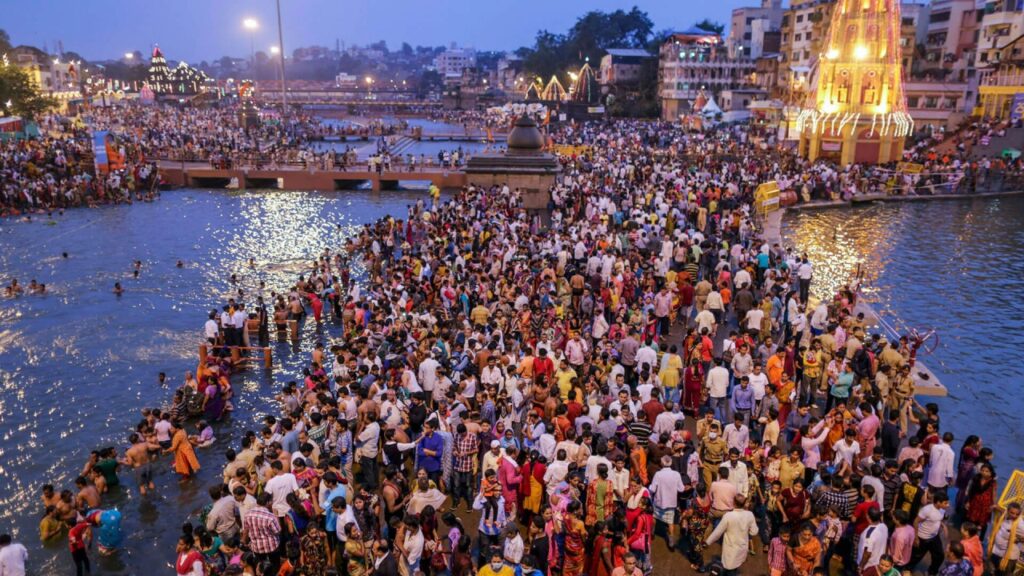
Reflections on the 2007 Kumbh Mela
As I left Prayagraj, physically exhausted but spiritually invigorated, I marveled at the feat I had just witnessed. The Kumbh Mela is more than the sum of its staggering statistics; it is a testament to the resilience, devotion, and creativity of humanity. It is a celebration of the sacred and the spectacular, the individual and the collective.
Would I return? Absolutely. The Kumbh Mela is an experience that stays with you forever, a reminder of the power of faith and the extraordinary things it can inspire.